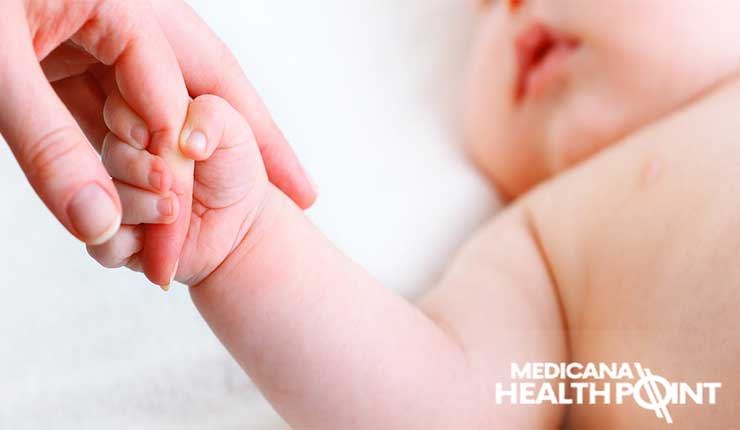In Vitro Fertilization (IVF)
IVF treatment is a treatment that increases the chances of pregnancy in couples with little or no pregnancy chance. In vitro fertilization hormone drugs are used to develop egg cells of the mother and egg collection under anesthesia. The eggs collected are fertilized in the laboratory with the sperm taken from the father on the same day. The best quality embryo selected from this method is transferred to the mother’s uterus. The transfer process is painless.
Causes and Treatment Types for IVF Treatment:
- Advanced maternal age, reduced egg reserve and quality of eggs
- Male factor factors such as decrease in sperm mobility and quality, azoospermia, varicocele
- Problems with intrauterine and fallopian tubes
- Cysts
- Infertility without reason
Stimulation of the Ovaries
On the third day of the new menstrual period, drugs containing a needle-like hormone are started to stimulate the ovaries. The purpose of using these drugs increases the likelihood of pregnancy, which will help the development of more than one egg cell. The process of stimulation of the ovaries is approximately 12 days, but this process can vary from person to person, as the ovaries determine the response to the drug. During this process, eggs are monitored closely with hormones and ultrasound. Another treatment method is a treatment protocol called short protocol, which starts on the 2nd or 3rd day of menstruation and lasts for 15 days.
In this treatment protocol, the needles are started to stimulate the eggs. The gonadotropin-releasing hormone antagonist is given as a preservative in order to prevent the early cracking of the follicles when the follicles reach a certain size or on the 6th day of the use of the hormone-containing drug. This drug is made from the core. Because the treatment time is shorter than the long protocol, it has the chance of equal success with long protocol rate and certain side effects such as hyperstimulation syndrome are seen less frequently, short protocol is preferred more frequently.
Egg Collection
When eggs reach a certain maturity and size, a different hormonal needle is used to crack the egg cells. About 34-36 hours after the preparation of this needle, egg collection is performed. In terms of the sensitivity of this process, it is very important to make the needle.
Egg collection: After the patient is admitted on an empty stomach in the morning, the patient is kept awake and eggs are collected between 20 and 30 minutes. This procedure is painless because the patient is sleeping. For IVF, eggs are reached vaginally. For this process, a needle is used which is directed by ultrasound to suck the eggs outward and direct it to the correct place. Although the number of eggs may vary from about 10 to 12 per patient, this number may vary between 1 and 40. In rare cases, no eggs can be collected. Due to the fact that the procedure does not require hospitalization, our patients can go home after a few hours.
Fertilization of Eggs
Obtained egg cells are fertilized according to laboratory conditions and sperm cell quality by using conventional IVF or microinjection method. Almost all are now used for microinjection. Thanks to this fertilization, the embryo is the main stone of the baby that develops in the womb. The fertilization detected under the microscope is about 12 to 15 hours. The result of this formation is reported to the patient and the day of the embryo transfer is decided.
Embryo Transfer
It is transferred 2 to 5 days after collection of fertilized embryos. This may vary depending on the quality of the embryo. Embryos, a thin plastic tube, the catheter is gently passed through the cervix and transferred into the uterus. The number of embryos to be transferred is decided together with the gynecologist before the transfer and the transfer is carried out accordingly. 2 embryos have 2 embryos and 2 embryos and 2 embryos over 35 years of age. Because the procedure is simple and painless, the patient is discharged after a half-hour of rest. The hormone, which we call progesterone, is administered to the patient until the pregnancy test, which takes place approximately two weeks later. An ultrasound is performed to see the gestational sac 10 days after the pregnancy test.
Pregnancy Test
A pregnancy test is performed 12 days after the transfer. It is understood that pregnancy occurred. This test is a blood test that we call BHCG in blood that does not require hunger or toughness. Pregnancy test gives positive results and one week – 10 days post-pregnancy ultrasound control is performed. Our out-of-town or overseas patients can check their information at the place they are located.
Working Time
- Mon-Thu : 09:00–18:00
Friday : 09:00–18:00
Saturday : 09:00–18:00
Sunday : Close
For Information
You can contact us for more information about our hospital and our departments.
-
Contact Us | +90 (850) 460 10 10

